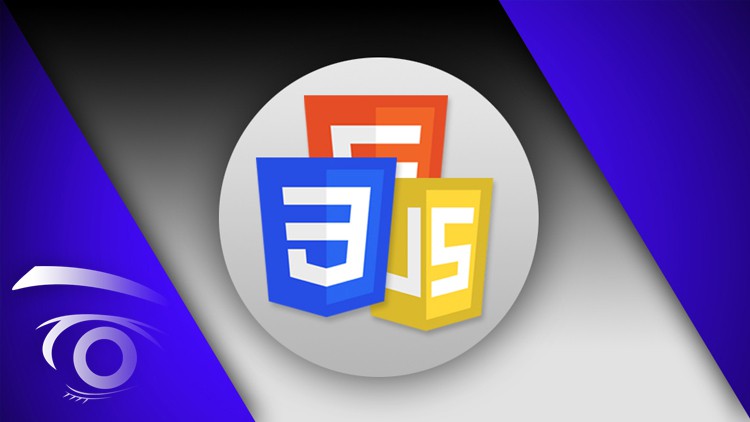
A Comprehensive Guide for Beginners interested in learning HTML, CSS, & JavaScript to Build Interactive Web Pages.
What you will learn
Design and build well-structured webpages using HTML
Implement semantic markup for improved accessibility and SEO
Create visually appealing websites with CSS styling
Apply consistent designs across multiple webpages using external stylesheets
Develop responsive layouts that adapt to various devices and screen sizes
Customize typography and fonts to enhance readability and aesthetics
Add interactive elements to websites using JavaScript
Write efficient and clean JavaScript code using best practices
Leverage conditional logic and loops for dynamic content generation
Handle user input and events to create engaging user experiences
Manipulate the DOM to update webpages dynamically
Validate forms and ensure accurate user input
Utilize JavaScript libraries and frameworks to streamline development
Optimize website performance for faster load times and smoother experiences
Debug and resolve common HTML, CSS, and JavaScript issues
Collaborate effectively with other web developers using industry-standard tools and practices
Develop a foundational understanding of web development concepts for further study
Create a portfolio of completed projects to showcase web development skills to potential employers or clients
Description
Have you ever wondered how the webpages you visit daily come to life? How does a seemingly simple combination of text and images create an interactive and dynamic user experience? The answer lies in the trinity of web development: HTML, CSS, and JavaScript. Together, these three technologies form the backbone of modern web design and development, enabling the creation of engaging, accessible, and responsive websites.
In this introductory course, we will delve into the essentials of HTML, CSS, and JavaScript to provide a solid foundation for aspiring web developers. By the end of this course, you will have a strong understanding of these technologies and be well-equipped to embark on your journey in web development.
HTML: The Structure of the Web
HTML, or HyperText Markup Language, is the cornerstone of any webpage. At its core, HTML provides the basic structure and content of a webpage. It uses a system of tags and attributes to define elements like headings, paragraphs, links, images, and more. These tags act as containers for content, allowing developers to create a meaningful and organized layout for their webpages.
As you begin your study of HTML, you will learn about the key elements that make up the structure of a webpage. These include the doctype declaration, the html element, head and body elements, and a variety of content-specific tags. You will also explore semantic HTML, which emphasizes the use of meaningful tags to convey the purpose and structure of content, ultimately making the web more accessible and search-engine friendly.
CSS: Styling the Web
While HTML provides the foundation of a webpage, CSS (Cascading Style Sheets) brings it to life with style and flair. CSS is a stylesheet language that allows developers to control the visual presentation of HTML elements, including colors, fonts, layout, and even animations. By separating content (HTML) from presentation (CSS), developers can create consistent and maintainable designs across multiple webpages.
Throughout this course, you will explore various CSS properties and selectors that allow you to target and style specific HTML elements. We will cover topics such as the box model, positioning, typography, and responsive design principles. You will learn how to create external stylesheets, enabling you to easily apply consistent styles to multiple webpages. Ultimately, you will gain an understanding of how to create visually appealing and accessible web designs.
JavaScript: Interactivity and Dynamic Content
The final piece of the web development puzzle is JavaScript, a powerful and versatile programming language. JavaScript breathes life into your webpages by enabling interactivity, dynamic content, and real-time updates. With JavaScript, you can create responsive user interfaces, validate user input, and even build complete web applications.
In this section of the course, you will learn the fundamentals of JavaScript, including variables, data types, functions, and control structures. You will explore the Document Object Model (DOM), a programming interface that allows JavaScript to interact with and manipulate HTML and CSS. Additionally, you will gain insight into key concepts such as event handling, asynchronous programming, and AJAX.
By understanding how JavaScript interacts with HTML and CSS, you will have the ability to create dynamic and engaging web experiences that respond to user input and adapt to different devices and screen sizes.
Putting It All Together
As you progress through this course, you will work on various hands-on projects that will help solidify your understanding of HTML, CSS, and JavaScript. These projects will challenge you to apply the concepts you have learned, allowing you to create functional and visually appealing webpages.
By the end of this foundational course, you will be well-prepared to tackle more advanced web development topics, such as responsive design, accessibility, performance optimization, and even server-side programming. With a strong foundation in HTML, CSS, and JavaScript, the possibilities are endless as you continue to explore and expand your web development skills.
The skills you acquire in this course will open doors to a wide range of opportunities, whether you’re interested in pursuing a career in web development, enhancing your current profession, or simply exploring a new hobby. With dedication and practice, you can become a proficient web developer, capable of creating modern, engaging, and accessible websites that cater to the ever-evolving digital landscape.
In summary, this course will provide you with a comprehensive introduction to the essential building blocks of web development: HTML for content and structure, CSS for presentation and styling, and JavaScript for interactivity and dynamic content. Together, these technologies empower you to create captivating web experiences that delight users and achieve your digital objectives.
So, are you ready to begin your journey into the world of web development? Let’s get started and lay the foundations for your success in the exciting and rapidly evolving digital realm.
Content
HTML Section
CSS Section
Document Object Model (DOM)
JavaScript Section